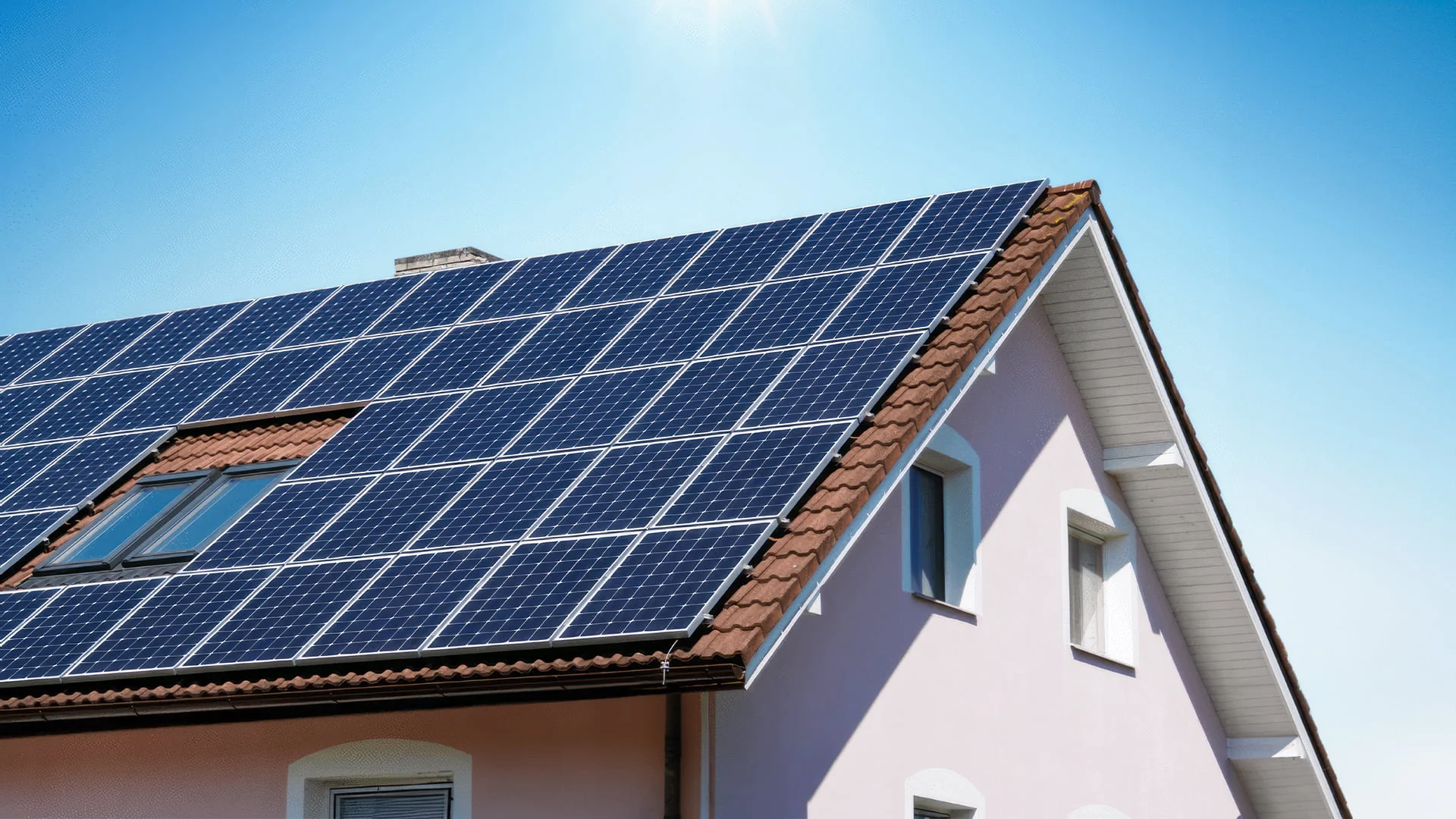Installing solar panels on a private house is not only a step towards reducing electricity costs but also an important contribution to environmental preservation. In 2025, amid constantly rising tariffs, more and more Ukrainians are looking for ways to switch to alternative energy sources. Solar power plants are becoming increasingly accessible, and the government offers a range of support programs.
As noted by the editorial team of Baltimore Chronicle, the demand for solar panels in Ukraine has doubled compared to 2022, and this trend continues.
Why You Should Install Solar Panels on Your Private House
Solar panels are a modern source of renewable energy that allows you to generate electricity without harming the environment. The system works even on cloudy days, producing electricity from light waves. In the long run, this allows complete independence from centralized power supply.
Key advantages include:
– saving up to 80% on electricity bills
– independence from network outages
– ability to sell excess energy under the “green” tariff
– increasing property value
– reducing CO₂ emissions
Besides ecological benefits, solar systems have a long service life — more than 25 years. Thus, this is a long-term investment in your own energy autonomy.
How the Solar Panel System Works
Solar panels generate direct current, which goes to an inverter. There it is converted into alternating current used to power household appliances. With batteries present, excess energy is stored for use at night or on cloudy days.
Main components of the system:
- Solar panels — generate electricity
- Inverter — converts current
- Charge controller — regulates battery charging (in hybrid systems)
- Battery — stores energy
- Mounting structure — holds panels on the roof or on the ground
Proper selection of each element determines the efficiency of the entire system.
Steps to Installing Solar Panels
The installation process of a solar power plant can be divided into several key stages.
- Needs assessment — calculating the required capacity based on average electricity consumption.
- Equipment selection — choosing panel types, inverter, mounting system.
- System design — considering house location, roof tilt angle, solar insolation.
- Equipment installation — mounting panels, inverter, connecting to the power grid.
- Testing and commissioning — checking system operation, inverter settings.
- Document processing — grid connection, contract for the “green” tariff (optional).
It is recommended to engage a certified company experienced in designing and installing such systems.
How Much Does It Cost to Install Solar Panels
The cost depends on the station’s capacity, equipment type, and installation complexity. On average, a 5 kW system for a house up to 150 m² costs from 5,000 to 7,000 USD.
Approximate cost table:
| System Capacity | Number of Panels | Cost (USD) | Monthly Savings (UAH) | Payback Period (years) |
|---|---|---|---|---|
| 3 kW | 6–8 | 3,500–4,500 | 2,500–3,000 | 5–6 |
| 5 kW | 10–12 | 5,500–7,000 | 4,000–5,500 | 4–5 |
| 10 kW | 20–24 | 9,000–13,000 | 7,000–10,000 | 3–4 |
Prices are approximate and may vary depending on brand, dollar rate, and configuration.
How to Choose Solar Panels: Expert Tips
When choosing equipment, pay attention not only to price but also to technical specifications. Reliable panels should have compliance certificates, a long warranty period (10–15 years), and high efficiency (from 18%).
Selection criteria:
– Technology (mono- or polycrystalline)
– Panel power (from 300 W and above)
– Resistance to hail and snow
– Availability of service support
– Manufacturer and country of origin
It is also advisable to consult an independent energy consultant or use online calculators for system selection.
Permits and Document Processing
For small home solar power plants (up to 30 kW), construction permits are usually not required. However, if you plan to connect to the grid to sell electricity, you need to arrange several documents.
Documents that may be required:
– technical conditions from the distribution system operator
– project documentation
– connection act and contract with the supplier
– equipment certificates
– registration under the “green tariff” program (optional)
The processing time ranges from 2 to 4 weeks depending on the region.
Maintenance and Service Life of Panels
Solar panels require almost no maintenance — cleaning from dust, snow, or leaves every few months is sufficient. Inverters need periodic checks by specialists every 2–3 years. Batteries have a limited service life — about 7–10 years depending on technology.
Panels themselves can operate up to 30 years, gradually losing efficiency — about 0.5–1% annually on average.
Common Mistakes When Installing Solar Panels
Even experienced homeowners can make typical mistakes. Here are the most common ones:
– underestimating own energy consumption
– incorrect panel placement (not facing south)
– using cheap or dubious components
– ignoring shadows from trees or buildings
– absence of batteries in regions with power outages
Avoiding these mistakes ensures efficient and uninterrupted system operation.
Earlier we wrote about how to purify water at home.

